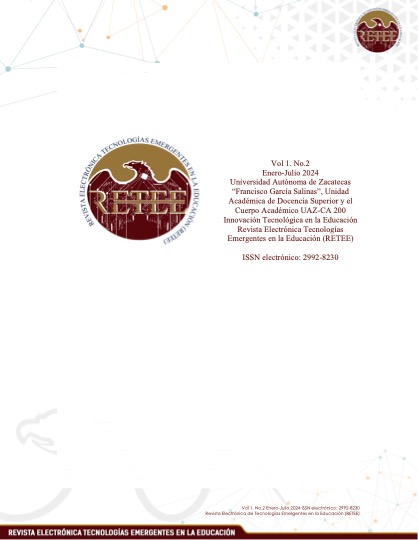Development and validation of the Instrument to measure the opinion of students in the use of teaching and learning strategies through Gamification
Published 2025-01-08 — Updated on 2025-01-28
Keywords
- Gamification,
- Meaningful learning,
- Collaborative learning,
- Embryology,
- Degree in Dentistry
Copyright (c) 2025 María Mercedes Mercedes Marín Velázquez

This work is licensed under a Creative Commons Attribution 4.0 International License.
How to Cite
Abstract
The main objective of this article is to present the design and validation of the Instrument to obtain opinions on the use of teaching and learning strategies through Gamification, prepared for the development of a doctoral thesis project. The instrument has the purpose of determining the relationship that exists between meaningful, collaborative learning and innovative strategies implemented through Gamification in the degree in Dentistry at the Autonomous University of Zacatecas “Francisco García Salinas”, specifically in the subject of Embryology. It is composed of 44 items with a Likert scale type response, organized with four blocks: general data, meaningful learning variable, collaborative learning and gamification. The validity and reliability of the instrument was established through expert judgment and Cronbach's Alpha consistency coefficient. The sample for the pilot test was made up of 94 students studying a degree in Dentistry at the Siglo XXI Campus of the Autonomous University of Zacatecas. The results obtained in the first phase of evaluation by experts showed a series of observations that were taken into account to modify the questions and in the second phase where the Cronbach's Alpha test was applied, it gave a high percentage of reliability to be able to use the instrument. in said investigation.
Downloads
References
- Calzadilla, M. E. (2002). Aprendizaje colaborativo y tecnologías de la información y la comunicación. Revista Iberoamericana de educación, 29(1), 1-10.
- Carrión Candel, E. (2018). El uso de la gamificación y los recursos digitales en el aprendizaje de las ciencias sociales en la educación superior. DIM: Didáctica, Innovación y Multimedia, (36).
- Collazos., C. A. y Mendoza, J. (2006). Cómo aprovechar el “trabajo colaborativo” en el aula. Investigación pedagógica, 9(2), 62-72. Redalyc.Cómo aprovechar el "aprendizaje colaborativo" en el aula
- García-Bellido, R., González Such, J. y Jornet Meliá, J.M. (2010). SPPS. Análisis de fiabilidad, alfa de cronbach. Grupo de innovación educativa universidad de Valencia.
- Huh, J.,DeLorme, D.E. y Reid, L.N. (2006). Perceived third-person effects and consumer attitudes on prevetting and banning DTC advesiting. En: Journal of Consumer Affairs, 40 (1) pp. 90-116.
- Lee, J. J., y Hammer, J. (2011). Gamificación en educación: ¿Qué, ¿cómo, por qué molestarse? Intercambio académico trimestral, 15(2), 146.
- Lucero, M.M. (2003). Entre el trabajo colaborativo y el aprendizaje colaborativo. Revista Iberoamericana de educación, 33 (1), 4-5. Entre el trabajo colaborativo y el aprendizaje colaborativo | Revista Iberoamericana de Educación (rieoei.org)
- Moreira, M. A., Caballero, M. C. y Rodríguez, M. L. (1997). Aprendizaje significativo: un concepto subyacente. Actas del encuentro internacional sobre el aprendizaje significativo, 19(44), 1-16. apsigsubesp-libre.pdf (d1wqtxts1xzle7.cloudfront.net)
- Oliva, H. (2016). La Gamificación como estrategia metodológica en el contexto educativo universitario. Realidad y reflexión,16 (44), 30-45. (PDF) La gamificación como estrategia metodológica en el contexto educativo universitario (researchgate.net)
- Otero-Potosi, S. A., Nuñez-Silva, G. B., Valencia, C. E. S., y Castillo, D. F. P. (2023). El proceso de enseñanza en el aula desde la perspectiva del aprendizaje significativo. Revista Latinoamericana Ogmios, 3(7), 13-24.Reyes et al., 2020, p. 158
- Welch y Comer (1988). Coeficiente de Alpha de Cronbach. http://www. uv.es/~friasnav/AlfaCronbach.pdf.


